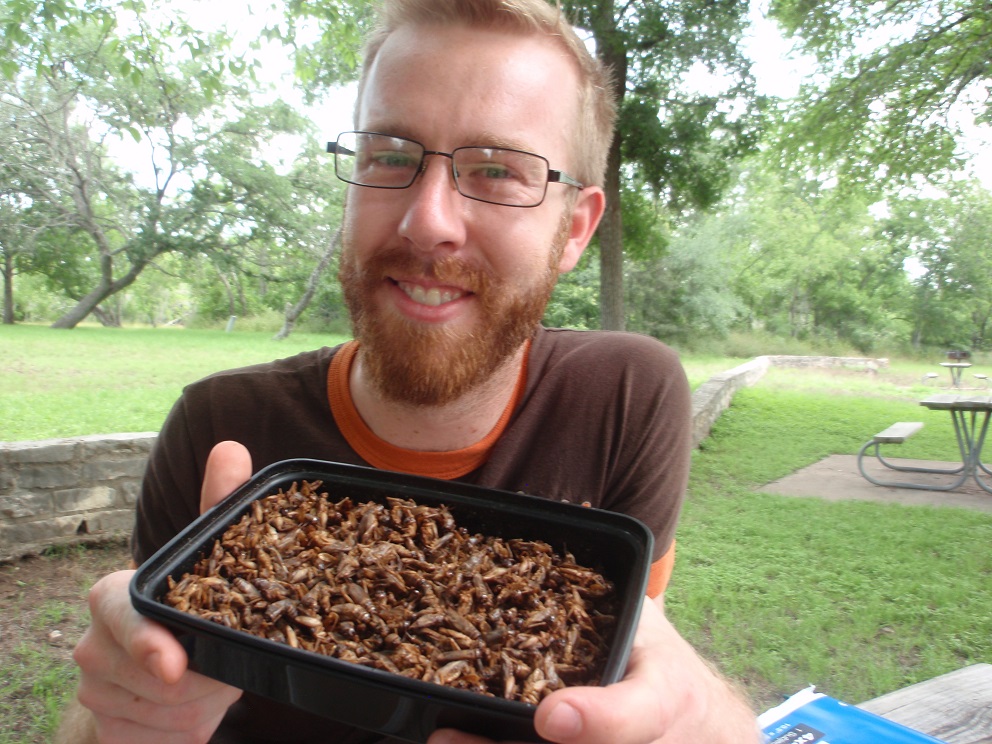Wildlife/Food: Eating Insects

Robert Nathan Allen, founder of Little Herds, with a container of roasted crickets at McKinney Falls State Park, photo by Cecilia Nasti.
This is Passport to Texas
Bugs have a way of showing up just as you unpack your picnic. But what if you welcomed their presence? No, not as guests… as snacks.
04— They really do have a crunch [crunches]; really similar to roasted nuts.
That’s Robert Nathan Allen, who was just then crunching a toasted cricket. He’s founder of the Austin, Texas based nonprofit Little Herds (www.littleherds.org).
08—And we focus primarily educating the public and particularly children about edible insects and why and how we can adopt them into
our diet.
We call eating insects as food Entomophagy; it’s commonplace among 80% of the world’s population. But we westerners steer clear.
19—Once western societies started becoming very agriculturally based, particularly in northern climates, it just became ingrained in our society that insects are dirty. And so, that idea has continued to be passed down generation to generation in these western cultures. Whereas in the tropical environments where the habit has continued, it’s just another food source.
The thing is, we already eat more than 400 insects a year without knowing it. Allen says by intentionally swapping insect protein for animal protein we can feed ourselves and help the environment. That’s tomorrow.
We record our series at The Block House in Austin, Texas, and Joel Block engineers our program…
For Texas Parks and Wildlife, I’m Cecilia Nasti.


 Passport to Texas is a
Passport to Texas is a  Passport to Texas is made available by:
Passport to Texas is made available by: